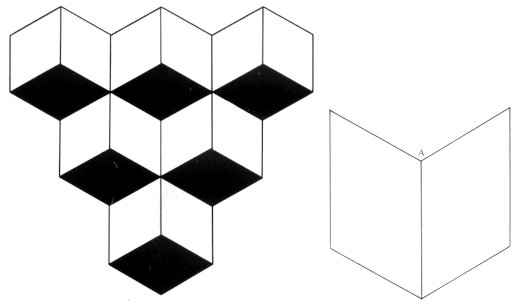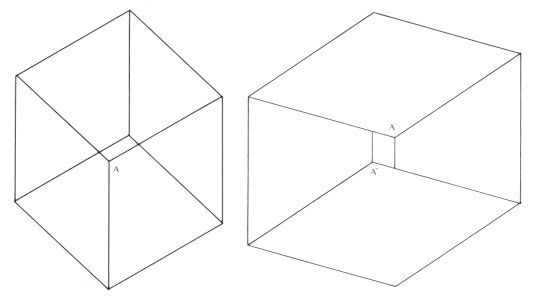|
(3) Reversal perspective illusions We usually look at the shapes of boxes such as a cube and others from a diagonally upper direction. Therefore, we have a fresh feeling when we see a solid kite like the one in Figure 358. In other words, we do not usually look up at shapes of cubes from the lower direction. If it is thought that a point A is located in the front, it looks like a cube seen from a diagonally upper position in Fig 360-a. On the other hand, if it is thought that A is located backwards, the box looks like a cube seen from a diagonally lower position. The principle of the reversal diagram on depth was reported by biologist Necker in Switzerland in the beginning of the 19th century. An example of the effect described above used in another form is shown in Figure 360-b. This looks similar to the previous example. In other words, one shape can be seen as two different shapes. In order to construct these KOHSEI (Basic Art & Design), it is important to draw solids surrounded by parallel and perpendicular corners using the drawing methods of the oblique projection or the equal angle projection. When the perspective is used, the structures of these reversal diagrams disappear. Because reversal diagrams are frequently applied in the field of modeling, these will be discussed in the next section where examples of the application of this principle in the field of arts will be introduced.
|

